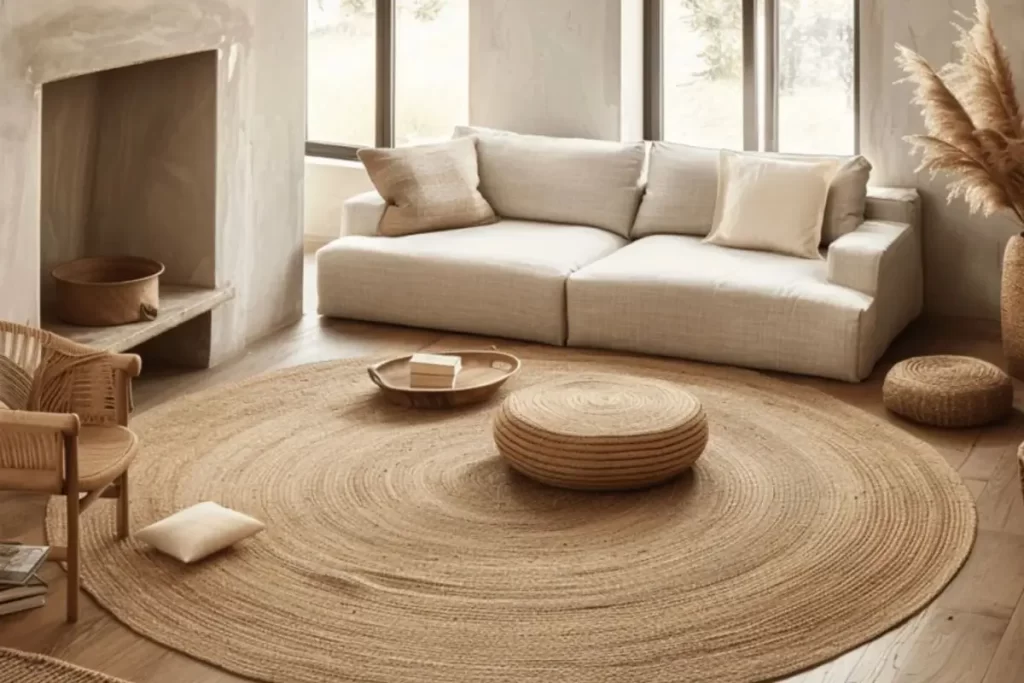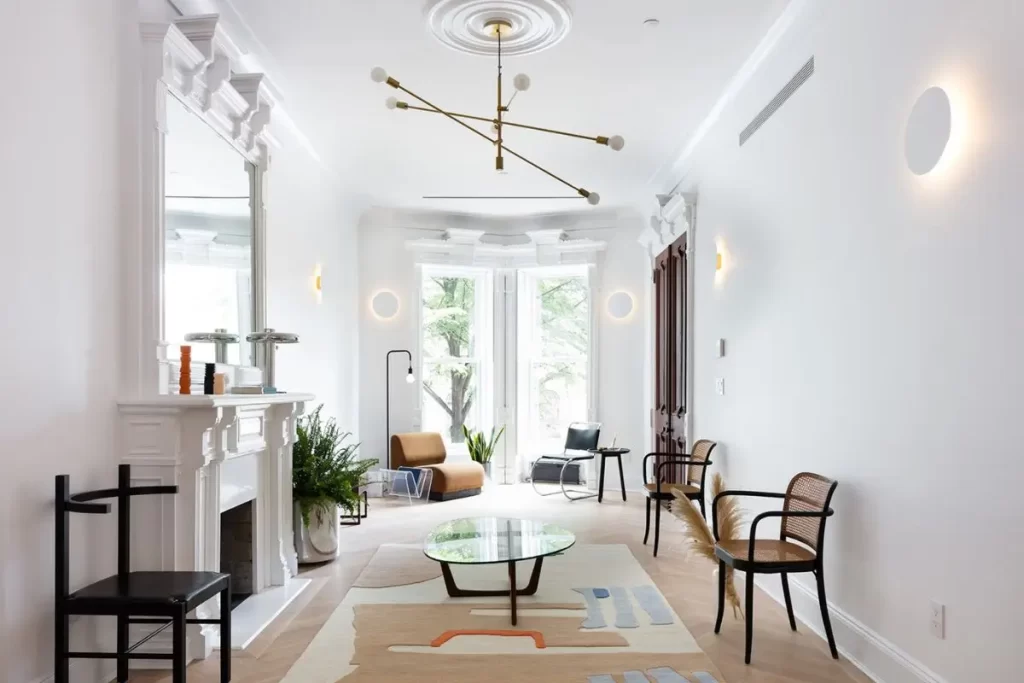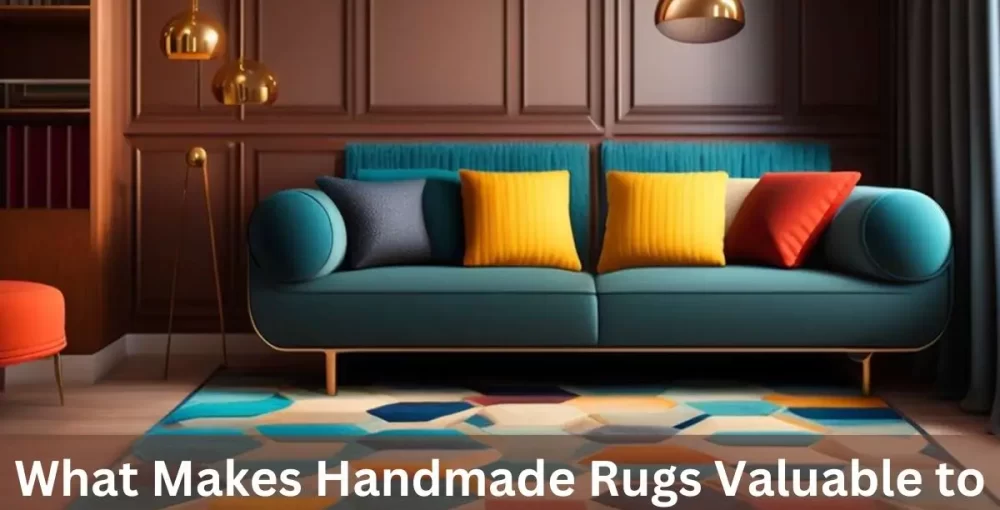Handmade rugs are timeless pieces that resonate deeply with collectors and interior designers alike. They offer more than just floor covering; they embody history, culture, and artistry. For collectors, handmade rugs often represent valuable investments and one-of-a-kind artworks. Interior designers, on the other hand, find them indispensable for adding depth, character, and sophistication to spaces. The allure of these rugs lies in their unique combination of skilled craftsmanship, rich materials, and visual appeal. Unlike machine-made alternatives, handmade rugs are crafted with intricate detail, and each one has its own story. They can be both traditional and modern, subtle or striking, fitting any design need. This guide explores what makes handmade rugs so coveted, from their unparalleled quality and durability to their cultural significance, ensuring they remain a staple in art collections and interior designs worldwide.
Exquisite Craftsmanship: The Art and Skill Behind Every Knot
The craftsmanship behind handmade rugs is a major factor in their appeal. Artisans use time-honored techniques, such as hand-knotting and hand-weaving, which require skill, patience, and dedication. Each knot and weave is done meticulously, sometimes taking months or even years to complete a single rug. This labor-intensive process gives handmade rugs a level of detail and texture that machine-made rugs cannot replicate. Artisans often learn these skills over generations, meaning each rug reflects a legacy of craftsmanship. This artistry isn’t just about technique; it also reflects the cultural heritage of the region. Patterns and styles vary based on location, giving collectors and designers access to a broad spectrum of cultural influences in rug designs. The result is a unique piece of art that adds character to any space and speaks to the rich traditions and expertise of its makers.
Cultural and Historical Depth: A Tapestry of Tradition
Handmade rugs carry immense cultural and historical value. Many traditional designs reflect the heritage, values, and lifestyle of the regions where they’re created. For instance, Persian, Turkish, and Moroccan rugs each have distinct patterns, colors, and motifs, passed down through generations. These designs often tell stories, symbolizing aspects like family, nature, or spirituality. For collectors, this cultural dimension adds depth to the rug’s value, turning it into more than just a decorative item. Antique handmade rugs, some of which are hundreds of years old, hold a particular fascination due to their rarity and historical context. These pieces capture a moment in time, showcasing the craftsmanship and aesthetic of a particular era. As a result, handmade rugs are prized not only for their beauty but for the cultural narratives they encapsulate, making them a meaningful addition to any collection or interior space.
One-of-a-Kind Appeal: Uniqueness in Every Handmade Rug
One of the defining characteristics of handmade rugs is that no two are exactly alike. Unlike mass-produced rugs, each handmade rug is an individual work of art, crafted by an artisan’s unique touch. This exclusivity appeals greatly to collectors and designers who value individuality and uniqueness. Whether it’s a subtle difference in dye, a slight variation in pattern, or an intentional asymmetry, these nuances contribute to each rug’s charm and character. Many collectors and designers seek out these one-of-a-kind pieces to add originality to their spaces or collections. Handmade rugs also offer customization potential, allowing clients to specify colors, designs, and sizes to meet specific aesthetic or functional needs. This customizability ensures that a handmade rug can be tailored to complement any room, making it both a versatile and a deeply personal choice in interior design.

Quality That Lasts: Durability Through High-Grade Materials
Quality and durability are hallmarks of handmade rugs, as they’re crafted with high-grade, often natural, materials such as wool, silk, or cotton. Artisans take great care in selecting materials that not only look beautiful but also last through years of use. The meticulous hand-knotting or weaving methods result in a dense, resilient structure, meaning handmade rugs can withstand high traffic without wearing out easily. With proper care, they can last decades or even centuries, making them ideal for collectors who view them as long-term investments. Interior designers appreciate this durability because it ensures that the rug will maintain its aesthetic appeal over time, even in frequently used spaces. In essence, investing in a handmade rug is choosing quality and longevity over quick fixes, as these pieces age gracefully and become more valuable as they develop their own patina.
Aesthetic and Textural Depth: Adding Dimension to Design
The aesthetic appeal of handmade rugs goes beyond color and pattern. They have a distinct texture and depth that is achieved through traditional weaving techniques, adding an element of tactile luxury to any room. The use of natural dyes enhances this appeal, as these colors are typically softer and more varied than synthetic dyes, creating a more organic look that harmonizes with various design styles. Handmade rugs introduce layers of texture that enrich the visual and sensory experience of a space, making them excellent focal points. For interior designers, this textured quality provides endless creative possibilities, as the rugs can anchor a room, add warmth, or complement other design elements. Collectors, too, appreciate these textural nuances, seeing each rug as an art piece that brings a room to life with its aesthetic richness and craftsmanship.
Investment Value: A Timeless Asset that Appreciates
Handmade rugs are not just beautiful décor items; they’re also considered valuable investments. High-quality handmade rugs, especially antique pieces, appreciate over time, often selling for higher prices than their original purchase cost. Rarity and age add value to these rugs, particularly when they are well-maintained and feature unique or intricate patterns. Collectors are drawn to the investment potential of these rugs, viewing them as assets that can diversify and enhance their portfolios. For interior designers, this investment quality provides clients with décor options that hold enduring value, making these rugs a wise choice for those seeking timeless elegance. Limited production and the scarcity of certain materials further increase their desirability, ensuring that the demand for handmade rugs remains strong in both collector and design markets.
Sustainable and Ethical Value: Supporting Artisan Communities and the Environment
Handmade rugs often embody sustainability, as they are typically crafted using eco-friendly materials and dyes. Many artisans rely on natural resources, like wool or silk, and avoid harmful synthetic materials, which is a significant consideration for environmentally conscious buyers. Moreover, handmade rugs are generally produced by small-scale artisans or cooperatives, ensuring that proceeds support local economies and preserve traditional crafts. This ethical dimension appeals to collectors and designers who prioritize sustainable choices in their purchases. Knowing that a rug was made ethically and supports artisan communities adds to its value, providing buyers with a sense of contributing positively to cultural preservation and environmental protection. In this way, handmade rugs are valuable not only for their beauty but also for the mindful practices that go into their creation.

Versatility in Design: Blending Seamlessly with Any Style
Handmade rugs are versatile, fitting seamlessly into various interior design styles, from minimalist to eclectic. Their adaptability makes them attractive to designers who aim to create cohesive yet dynamic spaces. These rugs can be used to complement existing décor or to add contrast and visual interest. For instance, a traditional Persian rug can ground a modern space with a touch of classic sophistication, while a bold, colorful tribal rug can add vibrancy to a neutral setting. Designers appreciate the ability to use these rugs as statement pieces or subtle accents, depending on the room’s requirements. The variety of available sizes, patterns, and colors ensures that handmade rugs can meet almost any design need, making them a highly adaptable choice in both residential and commercial interiors.
Sentimental and Heirloom Value: Stories that Last Generations
Handmade rugs often carry personal and emotional significance for collectors, as they may represent memories of travel, family heritage, or cultural appreciation. The story behind each rug — including its origin, the artisan who crafted it, and the techniques used — adds sentimental value that resonates with buyers. Collectors may seek out rugs with specific motifs or colors that hold personal meaning, adding a layer of emotional attachment beyond the rug’s physical beauty. For interior designers, incorporating a handmade rug into a client’s space can also enhance emotional resonance, creating an environment that feels warm and personalized. Additionally, handmade rugs are frequently passed down as family heirlooms, becoming cherished pieces that connect generations, which enhances their value both emotionally and financially.
Conclusion
Handmade rugs hold lasting value for both collectors and interior designers due to their craftsmanship, cultural significance, and adaptability. These rugs are more than décor items; they’re investments, works of art, and meaningful possessions. Their unique designs, quality materials, and historical importance make them highly sought after, while their ability to fit into diverse design schemes ensures they will remain timeless pieces. Whether viewed as a long-term investment, a cultural artifact, or an interior focal point, handmade rugs bring character, depth, and elegance to any collection or space.

